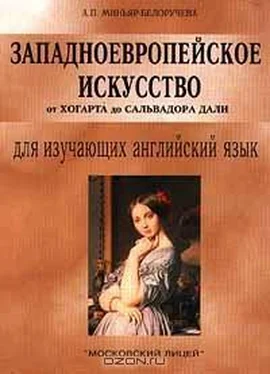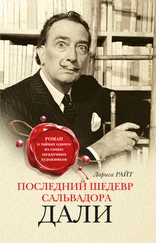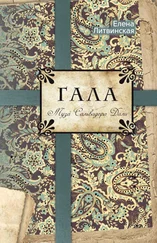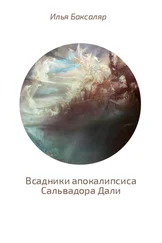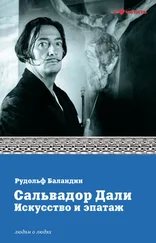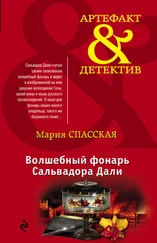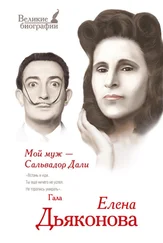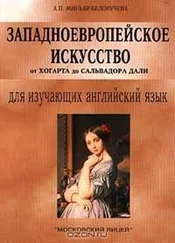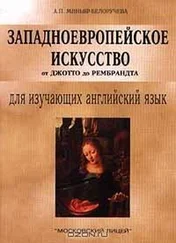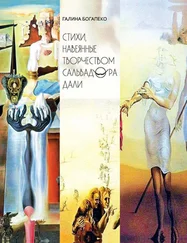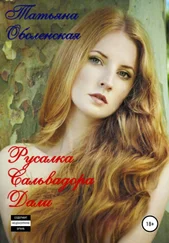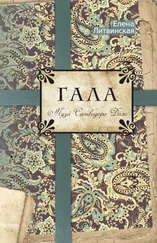Picasso never again reached this height, and though he continued painting with great energy for 36 years, much of his work is a recapitulation of motives he had invented.
Make sure you know how to pronounce the following words:
Picasso; Cubism; wreckage, Toulouse-Lautrec; synthetic; abstract; Pierrot; Harlequin; Franciscan; Minotaur; Dadaism; Basque; Spanish; France; absinthe; monk; Guernica; melancholy
Notes
Absinthe Drinker – «Любительница абсента»
Salimbanques – «Комедианты»
Les Demoiselles d 'Avignon – «Авиньонские девушки»
Seated Woman – «Сидящая женщина»
The Bottle ofSuze – «Бутылка «Сьюз»
Three Musicians – «Три музыканта»
Three Women at the Spring – «Три женщины у источника»
Guernica – «Герника»
Tasks
I. Read the text. Make sure you understand it. Mark the following statements true or false.
1. Picasso created one of the most important movements of the nineteenth century.
2. In Paris Picasso was influenced by Van Gogh's works of art.
3. During the Rose Period Picasso was concerned with the charm of circus performers.
4. Picasso invented Dadaism.
5. In 1917 Picasso was greatly impressed by the grandeur of the Italian past, especially Roman sculpture and the mural paintings of Giotto.
6. During the 1930s Picasso took an active part in the Neo-impressionist movement.
II. How well have you read? Can you answer the following questions?
1. What did Picasso paint in 1902? How is the figure depicted? What colour dominates in this painting? What does this colour mean?
2. What is one of the loveliest pictures of the twentieth century?
3. What heralds the beginning of Cubism? How are the figures depicted in this painting? In what way did Cezanne influence the development of Cubism? What forms dominate in the Seated Woman ? What phases are distinguished within Cubism? What are their peculiarities? How long did Cubism exist?
4. What is an epitome to the Synthetic phase of Cubism? What is a typical Synthetic Cubist picture? How are the figures depicted in this painting? How do the planes proceed? What style prevailed in Picasso's work during the years immediately after World War I?
5. What impressed Picasso when he was in Italy? What style did Picasso develop in 1921? What were the results of Picasso's experiments with the Classical style? How did Picasso make the figures? How long did this Classical style coexist with late Cubism in Picasso's production?
6. What artistic movement attracted Picasso during the 1930s? What is Picasso's best painting of this decade? What images did Picasso combine in this picture? How is the actual destruction pictured? What is depicted at the left? Where is the bull pictured? What symbols dominate in this painting? What do they mean? What is borne by the Cubist aesthetic means? How can Picasso's latest works be characterised?
III. i. Give Russian equivalents of the following phrases:
to cast a shadow across the twentieth century; artistic activity; to fall under the influence of; a figure of extraordinary sculptural simplicity and beauty; the proverbial colour of melancholy; strolling players; to herald Cubism; the partially decomposed figures; to derive from nature; art historians; component planes; abstract current; the mural paintings; incompatible styles; to execute an enormous painting; to fulfil a commission; crimes against humanity; Christian iconography; motives from Spanish folk culture.
ii. Give English equivalents of the following phrases:
творческая деятельность; попасть под влияние; легендарный цвет печали; фигуры чрезвычайной скульптурной простоты и красоты; искусствоведы; сопутствующие планы; провозгласить кубизм; частично деформированные фигуры; христианская иконография; преступления против человечества; элементы испанской фольклорной культуры; движение абстракционистов; фрески; написать огромную картину.
iii. Make up questions of your own with the given phrases.
iv. Arrange the/allowing in the pairs of synonyms:
a) current; melancholy; aesthetic; mysterious; deserted; wreckage; fragmentary; epitome; to herald;
b) abandoned; smashed ruins; trend; broken; to proclaim; summary; sad; enigmatic; beautiful.
IV. Here are descriptions of some of Picasso's works of art. Match them up to the titles given below.
1. This painting shows a family of the strolling players grouped together physically, but emotionally detached, before a mysterious desert landscape.
2. This picture is an epitome to the Synthetic Cubism.
3. This is the greatest of all social protest pictures.
4. Picasso has made the figures graceless, emphasising the bulk and weight of their hands and feet, and intensifying the impersonality of their stony faces.
5. The figures in the painting are a Pierrot, a Harlequin and a Franciscan monk.
6. This painting heralds the beginning of Cubism.
7. The individual forms – the characteristic swelling and distortion of the neck muscles or the reduction of the eyes to trapezoids -are not derived from nature.
8. The figure of extraordinary sculptural simplicity and beauty is enveloped in self-pity and helplessness.
a. Guernica
b. Three Musicians
c. Three Women at the Spring
d. Les Demoiselles d'Avignon
e. The Bottle ofSuze
f. Seated Woman
g. Absinthe Drinker
h. Salimbanques
V. Translate the text into English.
Эволюция искусства XX века наиболее ярко выражена в творчестве Пабло Пикассо.
Родившись в 1881 г. в маленьком испанском городке Малага, Пикассо уже в 1901 г. в Париже открывает свою первую персональную выставку, чтобы стать на последующие семьдесят лет центральной фигурой в западноевропейском искусстве. Период с 1901 по 1907 г. принято называть в его творчестве соответственно «голубым» (1901-1904) и «розовым» (1905 -1906). Картины, посвященные нищим, странствующим актерам, бродягам, выражают настроение усталости и обреченности. Они написаны в сине-зеленой гамме. С 1905 г., хотя темы остаются прежними, пространство заполняется розовато-голубоватой или золотистой дымкой.
Полотном «Авиньонские девушки» (1907) Пикассо ознаменовал рождение кубизма. В картине «Три женщины у источника» художник обращается к реалистическим формам. Пикассо отдал дань и сюрреализму, создав ряд произведений, чудовищно деформировав реальный образ человека.
Панно под названием «Герника» стало настоящим событием мировой художественной жизни. Эта композиция связала искусство Пикассо с жизнью всех народов, борющихся с насилием. До конца жизни Пикассо стремился раскрыть новые возможности искусства.
Читать дальше
